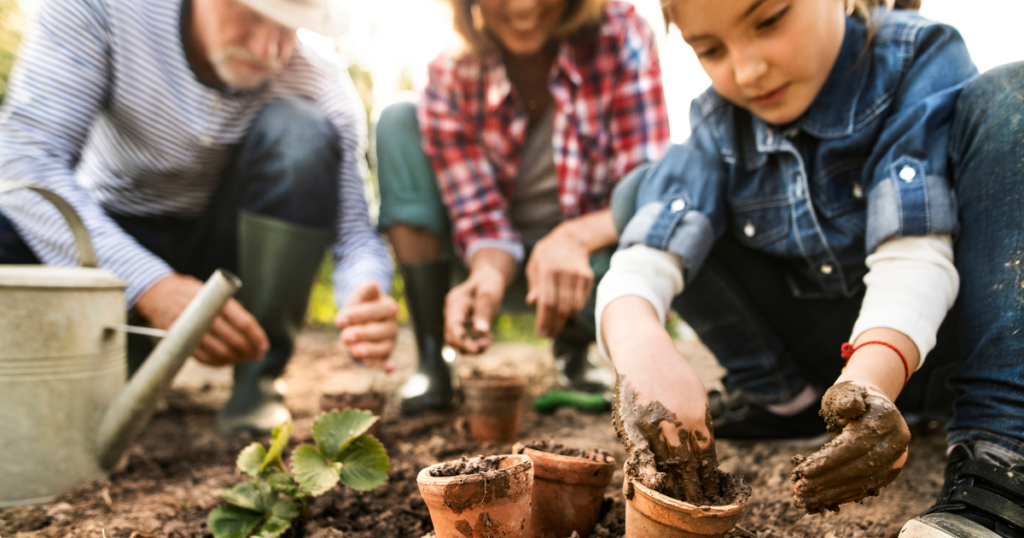By Jodi Whisenhunt
My favorite way to homeschool is to think outside the textbook. This is an especially helpful technique on those days when bookwork is monotonous, when the material is just not sinking in, when you are low on mental energy, when…well, just whenever!
Sometimes we just need a break from structured learning. To be honest, I have found that my kids learn best when they don’t realize they are learning. What? What I mean is that sometimes it is best to learn while you play.
Take a Break and Get Refreshed Outside
Nature is an excellent classroom. There’s no greater way to expand the walls of the home classroom than to knock them down and step outdoors. Believe it or not, all core educational subjects can be addressed just by taking a walk.
Stroll with me on this lovely spring day:
Butterflies Offer an Easy, Beautiful Learning Day

Flowers are in full bloom in many parts of the world right now, and that means butterflies are flitting about. Butterflies can be found on every continent except Antarctica, of course, and can thrive in a variety of conditions, such as wetlands, lowlands, tropics, mountains, forests, and farmlands. You can even spot them in your own backyard! These pretty pollinators keep our plants thriving. Snap photos of those you find or draw them in a sketchbook, and see if you can identify them online or at the library later. For additional fun, purchase a butterfly garden at your local craft, pet, or garden store, and raise and release your own butterflies to the environment!
“Fish are friends, not food” ~Bruce, Finding Nemo.
Do you live near a river, lake, or pond? Pick up some fish pellets at a local pet store and venture to the waterside (with attentive parental supervision, of course). Lightly sprinkle some on the water and observe what critters surface for a snack. Again, photograph or sketch what you see and identify them online or at the library later. If a body of water isn’t accessible, go to the pet store and check out all the fish tanks! There are many different species for sale. Observe an employee during fish feeding time and let them explain what is required to keep their numerous aquariums properly filtered and life supporting, and maybe pick up one of their handbooks to study at home.
A Break with Birds
The Cornell Lab of Ornithology at Cornell University hosts an annual program called The Great Backyard Bird Count (GBBC) each February. The purpose is to get people all around the world to get out in nature–in their own backyards–and note the birds they see around them. Grab a field guide online or check one out from the library and investigate what large or small aviators take flight around you. You might see chickadees, Northern Cardinals, Tufted Titmice, Steller’s Jays, or if you’re in Florida or Alaska, even a bald eagle! The Audubon Society is a great resource and has many ways to protect birds in your area.
Lots to Learn in the Dirt

Grow something! I’ve saved this for last, because it’s my least-credentialed area. Let’s just say neither of my thumbs are the slightest bit green. However, gardening can be simple. For those who have limited space, or for those like me with not-so-green thumbs, there are many how-to tutorials available online. For example, you can create a single-container garden to supply herbs like thyme, basil, or oregano to your kitchen pantry. You could gather fallen acorns from your oak tree, collect maple seed pods (you know, those little helicopter things), or even, yes, dandelion fluff. Investigate how to propagate them, and get growing!
Incorporate Your Findings into Your Homeschool Curriculum
Once you’ve explored the world around you, gather your findings and incorporate these valuable resources into your curriculum over the coming days. Your students can do further scientific studies or experiments and learn lab protocol. They can research a topic and write an informative paper about it. Younger students can practice tallying, adding, and subtracting when tracking the things they see around them. Kids can learn about geography by investigating what parts of the world the plants and animals they observe are native to, their growing/living zones, and habitat characteristics. They can also learn good citizenship when they learn how they can help the earth and its inhabitants.
One final benefit: everyone can enjoy the breath of fresh air!
What do you do when you need a break from homeschooling? Tell us about your easy learning days in the comments!
